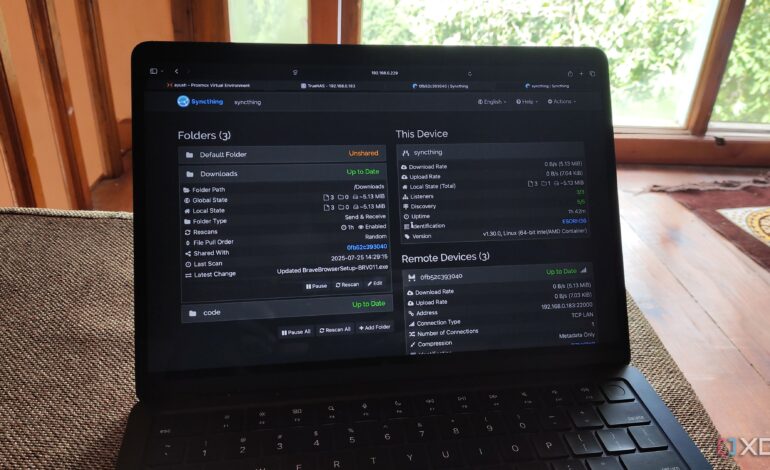Transforming File Management: Syncthing and Tailscale Unite

Accessing essential files across various systems is a hallmark of modern cloud services, yet platforms like Dropbox often impose limitations due to storage constraints. Users frequently face the dilemma of either deleting files to free up space or incurring continuous subscription fees for additional capacity. A user exploring alternatives discovered that integrating Syncthing and Tailscale could replicate the desired private cloud experience, effectively replacing conventional solutions like Dropbox.
Syncthing offers a unique approach to file synchronization, allowing users to automate the sharing of documents between devices without the need for third-party storage solutions. The initial setup involves creating a straightforward synchronization workflow between a primary device—such as a Windows 11 system—and a server, which in this case is a Proxmox home server. This configuration ensures that any changes made on one device are mirrored on the other, facilitating seamless access to the latest file versions.
To simplify the synchronization process, Syncthing allows the designation of a device as the “Introducer.” This feature streamlines connections among multiple devices within the network, making it particularly advantageous as the number of nodes increases. The user emphasized that without such functionality, managing connections would quickly become cumbersome.
Deploying Syncthing on both the client and server was straightforward. The user installed the executable file from the official Syncthing GitHub repository on their Windows 11 machine. By accessing the local web interface, they created a designated folder for shared files. On the Proxmox server, the user utilized the Proxmox VE Helper-Scripts repository to set up a Syncthing LXC (Linux container), following a simple command in the terminal.
Once the Syncthing LXC was operational, the next step involved enhancing the configuration to include file versioning options. This precautionary measure allows users to retain redundant copies of files, safeguarding against accidental overwrites—an essential feature for maintaining workflow integrity.
To enable remote access to the Syncthing setup, the user introduced Tailscale, a tool that provides a secure connection between devices. This was particularly useful given the user’s home network is affected by CGNAT, which complicates direct connections. By installing Tailscale on the Windows machine and integrating it into the Tailnet Control Plane, the user could extend access to their home network services from external devices.
The configuration process for Tailscale involved additional steps for establishing a subnet router within an LXC on the Proxmox server. By modifying the container’s configuration file, the user enabled network tunneling permissions necessary for effective communication among devices on the same Tailnet. This setup ensures that any device connected to the Tailnet can access the Syncthing instance, further enhancing the flexibility and utility of the private cloud.
Once the initial client-server pair was established, the user proceeded to connect additional devices to the Syncthing network, designating the Proxmox instance as the Introducer for these nodes. To protect the data housed within this private cloud, they scheduled weekly backups to a PBS (Proxmox Backup Server) instance, ensuring data recovery options in case of any mishaps.
In summary, the combination of Syncthing and Tailscale has empowered the user to create a robust private cloud solution that circumvents the limitations and privacy concerns often associated with traditional cloud services. This innovative approach not only enhances file management but also provides a greater sense of control over personal data, highlighting the potential for self-hosted solutions in an increasingly cloud-dependent world.






